#nebty
Explore tagged Tumblr posts
Note
Do you know about egypt history?
If yes..I have two questions:
1) what did they call their king and queen?
2) what did upper class people wear?
And the lower people too?
Do I know about Egyptian history? I have a Tutankhamen Sarcophagus pencil tin 🤣😏
Your Majesty. The Pharoah's full titles were Horus, king of Upper and Lower Egypt (Nesu Bity/Nebty), the Sedge and Bee (nswt-bjtj) and Son of Ra.
Egyptian fashion changed over time but I'll focus around Tutankhamen's reign. Egyptians of all classes wore similar style of clothing, usually of linen because of how common it was. The lighter the linen, the wealthier the wearer. It was accessories and decoration that set them apart. The women would have worn long dresses, fastened at the shoulders and hanging down to the ankles. Upper class women had access to materials to give their clothes more ump. Lighter linen layers over sheathe dresses (kalasiris), coloured beaded sheaths or feathers or decorative pins for example. The men would have worn the iconic kilts, wrapped around their waists and long tunics in the chillier months. Shawls and cloaks would have been worn.
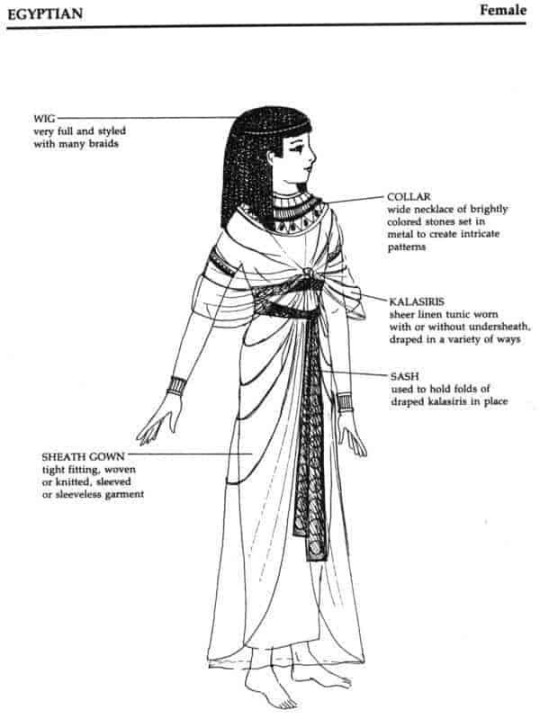
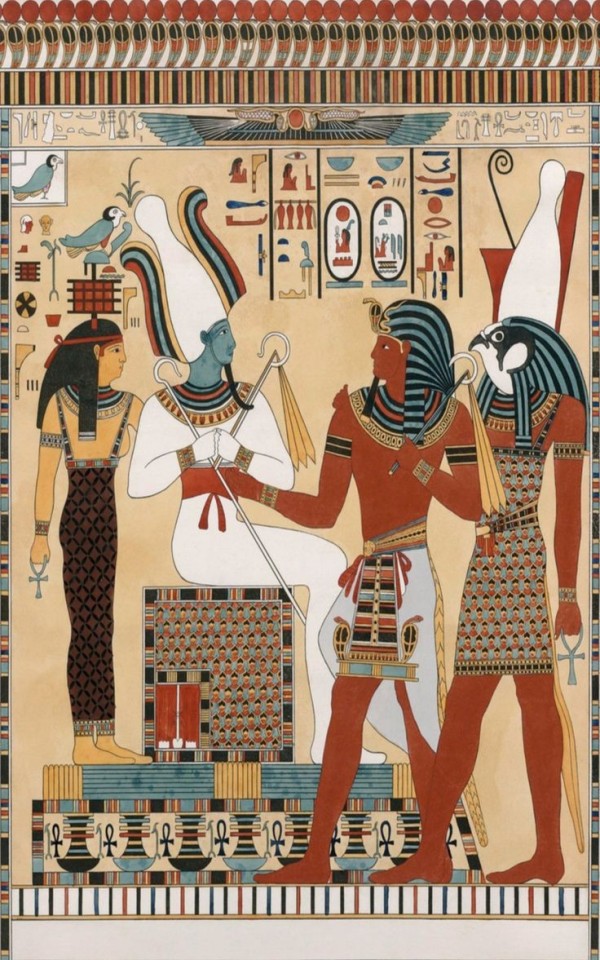
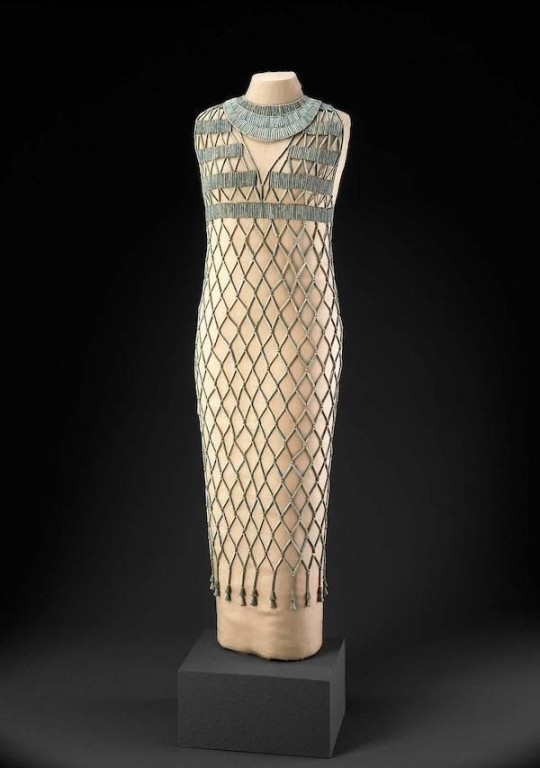

71 notes
·
View notes
Text

part 2 of me drawing other tavs <33
TAV belongs to @nebty !! (I also posted this on my IG/Twt and TikTok with credit to you but I can tag you for proper credit~) huge thanks for requesting your pretty one (I just noticed that I forgot jer frecklessss---)
32 notes
·
View notes
Text
Repostelftober 3&4: Old Meal and Old Lounge
Apparently new patch + heat wave eats up all my spoons, especially when my FC gets it in their head we should also do the new extreme (but hey, we cleared, and I got the hideous gunblade to boot).

In any case, this is an oldish vanilla screenshot I like. It took me roughly forever to get Duck in the right spot. Still, this picture has a) an elezen and b) what Dusk would absolutely consider a meal, so ... so there.



These were taken right as I started to mess with crimes to take gposes. This is pretty typical of how Dusk hangs out with friends that are comfortable with it. He's very cuddly, and always willing to be a pillow for people.
The au'ra is named Plua, and my friend @nebty let me borrow her for this, way back when. <3
17 notes
·
View notes
Photo
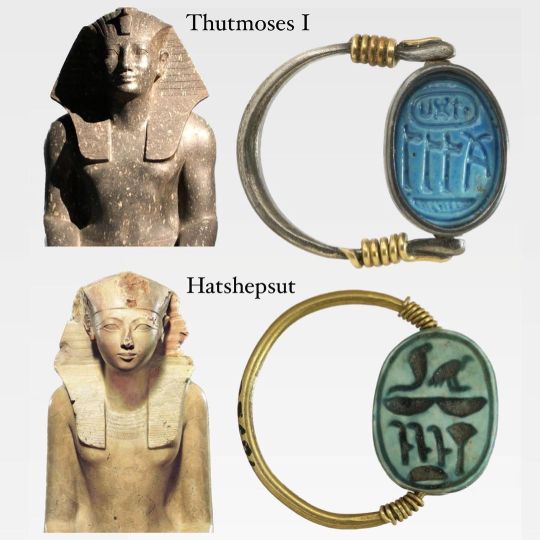
Pharaonic Swivel Rings of Thutmoses I and Hatshepsut (Father and Daughter) Thutmoses I’s Throne Name: (𓇳𓉼𓆣𓂓) 𓌸𓊹𓊹𓊹𓎟 “ˁ3-ḫpr-k3-rˁ mri nṯrw nb” ‘Great is the Manifestation of the Soul of Ra, beloved (of) all the gods’. Hatshepsut’s Nebty Name (the Two Ladies 𓅒 Nekhbet & Wadjet): (𓅒𓇅𓏏𓆳𓆳𓆳) “nbty w3ḏ.t rnp.wt” ‘The Two Ladies Flourishing in Years’ Fun Fact: It was Hatshepsut’s wish and command to be buried with her father in the same tomb 🥹🥰 The two gold band swivel rings have a faience hearr scarabs and are at located at the Louvre Museum in Paris, France @museelouvre (📸 Rings). 𓋹𓎬𓋹𓎬𓋹𓎬𓋹𓎬𓋹𓎬𓋹𓎬𓋹𓎬𓋹𓎬𓋹𓎬𓋹𓎬𓋹𓎬𓋹𓎬𓋹𓎬𓋹𓎬𓋹𓎬𓋹𓎬 @egyptologylessons 𓋹𓊽𓋴𓆖𓎛𓇳𓎛 © 𓊁𓊁𓊁𓊁𓊁𓊁𓊁𓊁𓊁𓊁𓊁𓊁𓊁𓊁𓊁𓊁𓊁 #Ancientegypt #ägypten #egyptology #egypte #egitto #埃及 #مصر #egipto #이집트 #swivelring #egyptianjewelry #thumosesi #hatshepsut #louvremuseum #louvre (at Louvre Museum Paris) https://www.instagram.com/p/CnMxX6OOCyb/?igshid=NGJjMDIxMWI=
#ancientegypt#ägypten#egyptology#egypte#egitto#埃及#مصر#egipto#이집트#swivelring#egyptianjewelry#thumosesi#hatshepsut#louvremuseum#louvre
73 notes
·
View notes
Note
You know a fusion between Santi and Nebul they could probably be good sex therapist. Santi brings the creative ideas and sex knowledge while Nebul could help with the emotional problems and help couples be honest with each other. I think that be a interesting fusion. Or I'm probably just greedy and want to plow both of them.
I would fear a fusion between those two greatly.
Sanbul, or Nebti? Nenti? Something....
They would essentially be a hypersexual sadist, using greatly enhanced mental manipulation to induce states of total needy submission in their partners (or victims), a hybrid of such great power they'd be revered in Hell- And the first of its kind, an undead half-demon who is not infertile! Be on your toes around him.
While I agree this fusion's superficial job would be that of a sort of sex/couple's therapist, he would also absolutely run some type of underground mindbreaking dungeon kind of like Nebul does, but with a little more pizzazz.
I can't picture his looks too well, I'd keep some form of robes, horns and tail, but would he have a conventional face?
46 notes
·
View notes
Text
Hello I have some things to give you the feels about the boy King Tutankhamun.
The Golden Thread, by Kassia St Clair


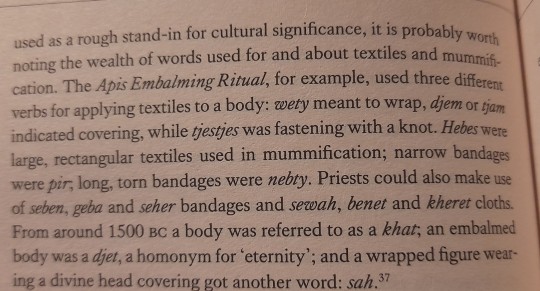
The boy king was treasured... he was turned into a holy thing... sent away with blessings and love... and now he is not even a shadow of it, there is nothing he or his people would know as holy about his rest now. The things he treasured were with him but what made him sacred was the linen, and the linen was destroyed. Transcript under the cut.
::readmore::
[The linen] over the guardian statues was a rich cream and had a texture that Carter described as filmy. Although this was the first time this practice had been observed, as it were, in the flesh, it was already known from surviving rites and paintings. These indicate that the wrapping of cult statues was an important part of worship. They were kept in special shrines deep within temples and were dressed, in private, with fresh linen at least once daily by priests. Linen was closely bound to the secrecy, seclusion and ritualised concealment that was key to ancient Egyptian religiosity. In Unwrapping Ancient Egypt, Christina Riggs argues not only that the textiles used to cover sacred images and objects were an intrinsic part of their sanctity and meaning, but that this was in turn renewed and strengthened during each ritualised wrapping ceremony. The linen, in other words, was part of the point, not just a protective layer. "The act of wrapping a body or a statue in linen had the power to transform mundane, or even impure, matter into something pure and godlike."
If breadth in vocabulary can be used as a rough stand-in for cultural significance, it is probably worth noting the wealth of words used for and about textiles and mummification. The Apis Embalming Ritual, for example, used three different verbs for applying textiles to a body: wety meant to wrap, djem or tjam indicated covering, while tjestjes was fastening with a knot. Hebes were large, rectangular textiles used in mummification; narrow bandages were pir, long, torn bandages were nebty. Priests could also make use of seben, geba and seher bandages and sewah, benet and kheret cloths. From around 1500 BC a body was referred to as a khat, an embalmed body was a djet, a homonym for 'eternity'; and a wrapped figure wearing a divine head covering got another word: sah.
After [Carter's] work was done, he assured readers, 'the King's remains ... will be reverently re-wrapped and returned to the sarcophagus.' That may have been the intention, but if it was then something - perhaps the rumours of the curse or, more likely, all the treasures Tutankhamun's mummy had secreted about its person - got in the way of Carter's intended care. When the sarcophagus was re-opened in 1968, the body of the Egyptian ruler was found to be in a parlous state. "The mummy was not in one piece,' the researchers later wrote. "The head and neck were separated from the remainder of the body, and the limbs had been detached from the torso... Further investigation showed that the limbs were broken in many places." These breaks had been the work of Carter and his team, who had employed ever more violent methods to get at the body, amulets and jewellery among the bandages; heated knives were slid inside the golden mask to prise it from the decapitated skull. The boy king has been laid to rest again inside his tomb, but in a base, broken khat incarnation, rather than the linen-sculpted and sacred sah image that the masters of secrets created around 3,360 years ago. Tutankhamun has since been re-buried unwrapped.
#tutankhamun#kassia st. clair#the golden thread: how fabric changed history#linen#history#i was in tears about this
39 notes
·
View notes
Text
15 questions for 15 friends
Tagged… a while ago… by @awordwasthebeginning - thanks 💜
Are you named after anyone? No, though if I’d been AMAB I would have been saddled with my bio dad’s first name as my middle name. So many bullets were dodged.
Do you have kids? No. Not planning to, either.
When was the last time you cried? I came close maybe two weeks ago, out of embarrassment over having forgotten a pretty basic thing. (Rather than recognizing it as a sign that maybe the overtime was getting a bit out of hand.)
What sports do you play/have you played? I tried judo and badminton as a kid, to no great success. Now I’m… well, I play quadball when I can, hoping that the local quadball team survives so I can keep playing, because otherwise I’d have to cross the border to play.
Do you use sarcasm? As I’ve been told the story, when I was tiny, there was some situation where my parents explained sarcasm to me, and from that moment on I was a sarcastic little shit.
What is the first thing you notice about people? Clothes and haircut and anything but the things that would be useful to recognize them again.
What’s your eye color? Grayish blue.
Scary movies or happy endings? Depends on the mood.
Any talents? If we’re talking things I’m good at with less practice than expected, I’m weirdly good at separating egg yolks and whites.
Where were you born? Somewhere my family never lived, it was just the nearest place with a hospital.
What are your hobbies? Reading (or wanting to), knitting (ditto), crocheting (you guessed it), visible mending (that gets done a bit more frequently due to necessity), and… with how much it helps me relax, I do think cooking counts.
Do you have any pets? No, though I’ve been making vague (as in “where would I put the litterbox if the laundry room has to be an airlock?”) plans for having an indoor cat one day.
How tall are you? 183 cm.
Favorite subject in school: for the last years, it was definitely biology.
Dream job: also want to say I like the one I have. I get to nerd and program and help people and they pay me for it.
Tagging, hm… @toooldforthisbutstill @having-conniptions @tatzelwyrm @thattalviel @nebty @wippsteertt @grumpyfaceurn @mutantenfisch @black-cat-aoife @secretmellowblog @theherondaels @mishidraws @arkodian and whoever else wants to!
4 notes
·
View notes
Text
Ancient Egypt - The Uraeus
The uraeus or the rearing cobra is another important sign of royal regalia in ancient Egypt. It is usually seen on headdresses, crowns and the brow of statues of kings and queens and even extending to deities. It is a symbol of the legitimacy of the king’s rule and is otherwise known as Weret Hekau (usually with a human head) that means Great of Magic. It is usually an Egyptian spitting cobra and has been used interchangeably with the ideas of sovereignty, deity, royalty and divine authority. It is usually made of gold found mostly in the royal garb and even in certain burial sites. In hieroglyphs, the uraeus had several varieties and interpretations. It may refer to a priestess, a goddess like Menhit and Isis, or a shrine of a goddess.
Originally, the uraeus is the symbol of the Lower Egypt patron goddess, Wadjet. She is believed to take the form of the cobra on land and having her on the crown of the king would signify her protection from enemies as well as extension of rule over the entire Lower Egypt. During the unification of the country, the uraeus was merged with the vulture – the symbol of Upper Egypt’s patron deity, Nekhbet. Together, the two creatures became the nebty or the two ladies protecting the pharaoh.
When the pharaohs became a manifestation of the sun god Ra, the uraeus was believed to spit poison or fire at the enemy of the king to protect him . It is often found on both sides of the sun disc usually worn by the sun god. In line with this, the uraeus became the Eye of Ra and had been connected to the goddesses who performed such functions including Hathor, Isis, Nekhbet, Sekhmet, Wadjet and Bastet. In various parts of history, it became referenced as the Eye of the Moon, the Eye of Hathor, Eye of Horus, and Eye of Ra depending on the dates and periods it was used. It may have also been connected with other goddesses like Neith and Ma’at.
Because the uraeus has always been a royal symbol, it became associated with the ruler gods of Egypt. Horus and Set, in some depictions, may be seen wearing it. One of the mythology of the origin of the uraeus started with Story of Ra. Isis was believed to have created the first uraeus by forming it from the dust of the earth and the spittle of the sun. The goddess used it in acquiring the throne of Egypt for her husband Osiris.
The most famous uraeus is the golden one of Sensuret II made of solid gold with black granite eyes. The head is made of deep ultramarine color lapis lazuli with hood carnelian and turquoise inlays for hood. This uraeus was 6.7 cm measured from top to bottom.
The only known uraeus seen together with an entombed pharaoh was the one found in Tutankhamun. These were two golden uraeus believed to have been passed on from one pharaoh to the next.
Publicado 29th August 2019 por Rodolfo Jardón

0 notes
Text
VI – Il nome delle Due Signore dei Faraoni | le pagine dei nostri libri
l Nome Nebty o “Le Due Signore” legato alle divinità patrone dell’Alto e del Basso Egitto è indicato da due simboli “neb” e compare solo con Den quinto sovrano della I. Si riferisce al Faraone e lo appella di fatto Signore dell’Alto e del Basso Egitto. 2 nb che significano signore, dominatore sovrastati da due animali: il primo è l’avvoltoio collegato alla dea Nekhbet venerata nell’Alto…

View On WordPress
0 notes
Text
Women in Ancient Egypt and false information on Facebook
While on Facebook I found this statement on Facebook.
Women in ancient Egypt were revered as superior and more sacred than men, being considered the source of life and wisdom. It was believed that a man who attained great knowledge, spirituality, and power could earn the right to wear a long-haired wig, which symbolized his attainment of a level equal to that of a woman. The woman was seen as a source of strength and protection for her man, and it is a saying that still circulates today that behind every successful man is a strong woman supporting him"

(the statement and picture can be found at https://www.facebook.com/photo/?fbid=912558597326206&set=a.552267950021941 )
Reading from the above statement, I had to do some research and ask myself a question, which was, were Women in ancient Egypt revered as superior and more sacred than men? -
Answering the above question the answer would be no, women in ancient Egypt were considered equal to men and had rights, but not slave females as slaves of either gender did not have rights, free women could buy, own and inherit property also they could run and own businesses etc Having said this, many positions of leadership were held by men.
But there, were exceptions to this as there were female Pharaohs, also Nefertiti could be classed as a powerful woman as she later became a Pharaoh herself under the name Neferneferuaten also some women did hold other leadership roles in ancient Egyptian society, on the whole. more men held these sorts of roles more than women.
But they were not superior to men and not superior or equal to the Pharaohs who were considered like Gods as they thought the Pharaohs were related to, or being the earthly embodiment of Horus, Horus is pictured wearing the crown of the Pharaohs in Some pictures of him.
Cleopatra and other female Pharaohs (see list linked below) are the exceptions to the rule as they were Pharaohs, there were also few preserved examples of women as high officials again this is the exception to the rule as I said, a lot of the leadership roles were men. Of course, there were female goddesses in ancient Egypt such as Isis, but, I think the more powerful gods in ancient Egyptian religion are Amun, Osiris,, Anubis:, Ra, Horus, and Thoth, as they are high on the list of Egyptian Gods plus they were male, because they are called Gods and not Goddesses.

Interesting information about the statue of the couple shared at the opening of this blog post the statue is of King Menkaure (Mycerinus) and his Queen, Kha-merer-nebty II, ca. 2548-2530 B.C. (Dynasty IV)
It was found in the Giza Valley Temple of Menkaura and now in the Museum of Fine Arts, Boston, below is a link to the museum catalogue about this exhibit
https://collections.mfa.org/objects/230#:~:text=King%20Menkaura%20(Mycerinus)%20and%20queen,Museum%20of%20Fine%20Arts%2C%20Boston
References:
Pharaoh - Wikipedia - https://en.wikipedia.org/wiki/Pharaoh
Religion in Ancient Egypt: A Hierarchy of Gods and Goddesses https://anthropology.msu.edu/anp455-fs18/2018/10/30/religion-in-ancient-egypt-a-hierarchy-of-gods-and-goddesses/
List of Egyptian deities - https://www.wikiwand.com/en/List_of_Egyptian_deities
Amun - Wikipedia - https://en.wikipedia.org/wiki/Amun
Osiris - https://www.wikiwand.com/en/Osiris
Anubis - Wikipedia - https://www.wikiwand.com/en/Anubis
Ra - Wikipedia - https://en.wikipedia.org/wiki/Ra
Horus - Wikipedia - https://www.wikiwand.com/en/Horus
Thoth - Wikipedia - https://www.wikiwand.com/en/Thoth
Was this woman Egypt's first female pharaoh? - https://www.nationalgeographic.com/premium/article/first-female-woman-pharaoh-ancient-egypt
Female pharaohs - Wikipedia - https://en.m.wikipedia.org/wiki/Category:Female_pharaohs
Nefertiti - Wikipedia - https://www.wikiwand.com/en/Nefertiti
Neferneferuaten - Wikipedia - https://www.wikiwand.com/en/Neferneferuaten
Women in Ancient Egypt - https://www.ees.ac.uk/resource/women-in-ancient-egypt.html#:~:text=singers%20or%20musicians.-,Women's%20Rights,could%20even%20divorce%20her%20husband.
Women in ancient Egypt - Wikipedia - https://www.wikiwand.com/en/Women_in_ancient_Egypt
Slavery in ancient Egypt - https://www.wikiwand.com/en/Slavery_in_ancient_Egypt
0 notes
Text

Micerino e la moglie Khamerer-Nebti. 2490-2472 a.C.
Basalto, dalla tomba di Micerino a Giza.
Conservata nel Museum of Fine Arts di Boston.
0 notes
Text
I got tagged by @talesofamelody for this, and I will do my best. It will become clear I do not 'fandom' all that much in reality.
10 Characters/10 Fandoms/10 Tags
FFXIV: Estinien Sailor Moon: Sailor Jupiter MST3K: Crow (don't make me choose between which version pls) Dragon Age: Zevran Mass Effect: Garrus SWTOR: Doc Ranma 1/2: Akane Powerpuff Girls: Buttercup Baldur's Gate: Lae'zel Viva Pinata (the game): Macaracoon
@joiedecombat @alixennial @sarahsyna @petitfarron @tsupertsundere @nebty @zephyrfog @airis-ray @space-diablo @cadrenebula
10 notes
·
View notes
Text

AUTORE: sconosciuto
NOME DELL'OPERA: Micerino e la moglie Khamerer-Nebti
DATA: 2.490-2.472 a.C.
TECNICA: altorilievo in basalto
COLLOCAZIONE: tomba di Micerino, Giza
FUNZIONE ORIGINALE: statua del re e di sua moglie da collocare nelle tombe e nei templi
COLLOCAZIONE ATTUALE: Boston, Museum of Fine Arts
0 notes
Text
Nome dell'opera: ritratto del re Micerino e della moglie Ka-merer-nebty
Autore: sconosciuto
Periodo: 2530-2512 a.C., antico regno
Tecnica e materiali: diorite scolpita a tutto tondo
Luogo di conservazione: Museum of Fine Arts, Boston
Luogo di ritrovamento: tempio a valle di Micerino sul Nilo

0 notes
Text
King Nebka: An Overview of Egypt's First Pharaoh
King Nebka, also known as Hor-Nebty, was the first pharaoh of Egypt's First Dynasty. He is believed to have ruled for around 25 years, from approximately 3100 to 3075 BC. Nebka's name means "The Lord of the Two Ladies," a reference to the goddesses Nekhbet and Wadjet.
0 notes
Text
Tag 9 people you want to know better
Tagged by @toooldforthisbutstill - thanks! And sorry for taking forever to answer.
Favorite color: blue
Currently reading: Last Bus to Woodstock
Last song: Family is over so it’s been a while since I listened to music. I think a David Garrett cover of a movie soundtrack?
Last series: does half watching an aggressively 2000s crime show I dug up for the family count?
Sweet, savory or spicy? Spicy all the way, no matter if it’s paired with savory or sweet.
Currently working on: two sets of birthday presents (one knitted, one crocheted). My body is also still kind of busy healing up after top surgery , that also feels like a project (going to be able to raise my arms SOON, though).
Tagging… @awordwasthebeginning @theherondaels @thattalviel @ackerschnacker @having-conniptions @tatzelwyrm @mutantenfisch @nebty @black-cat-aoife
…and since I just got up, there’s probably people whose handle I’m too tired to remember - if you’re wondering why I didn’t tag you, consider yourself tagged.
4 notes
·
View notes